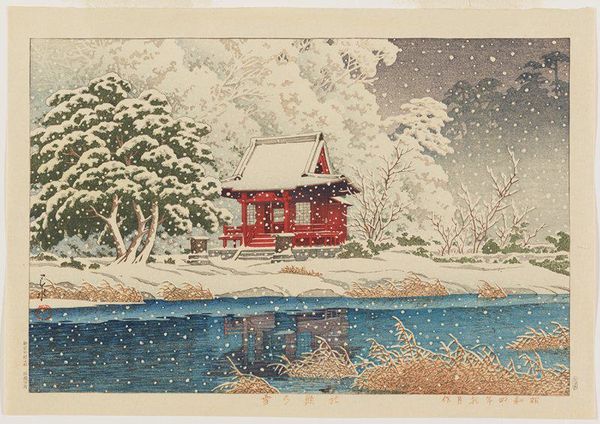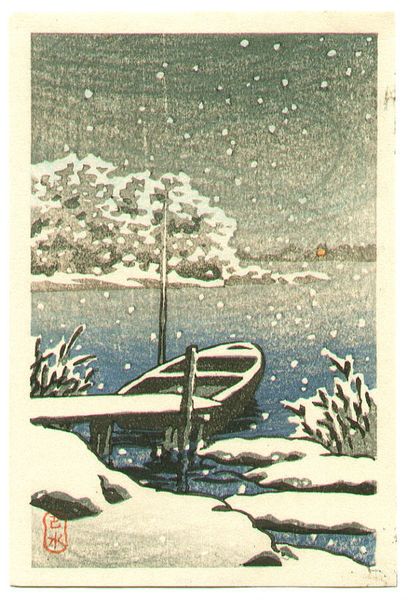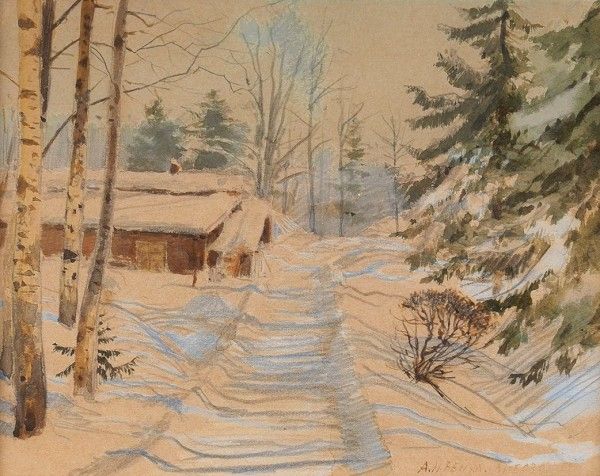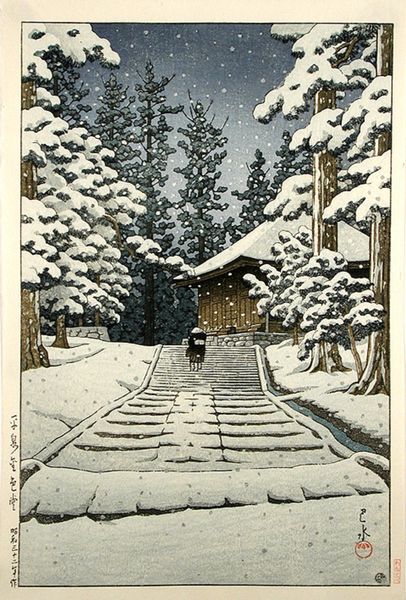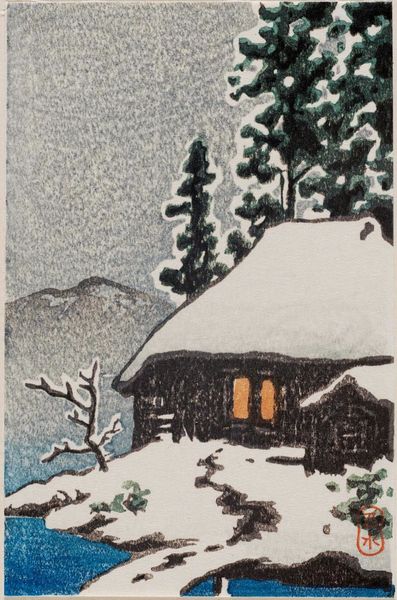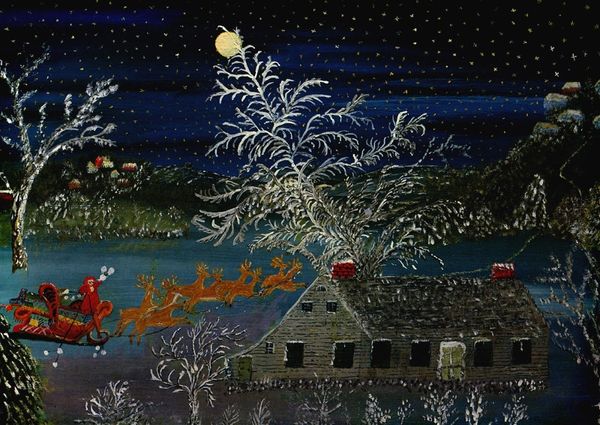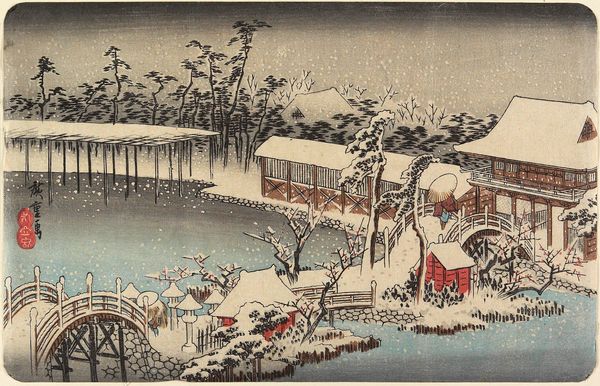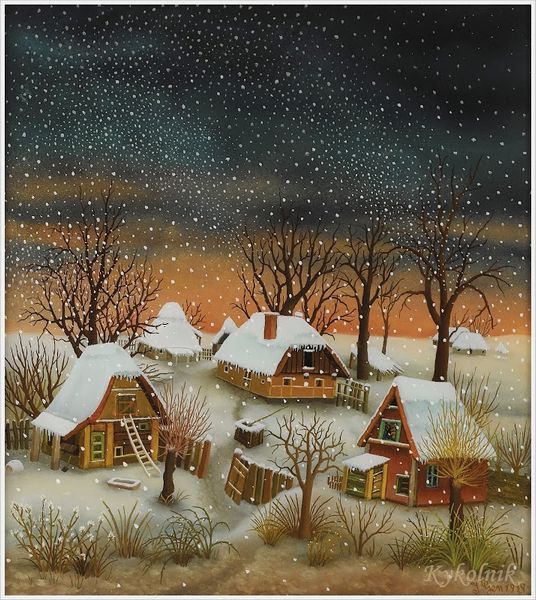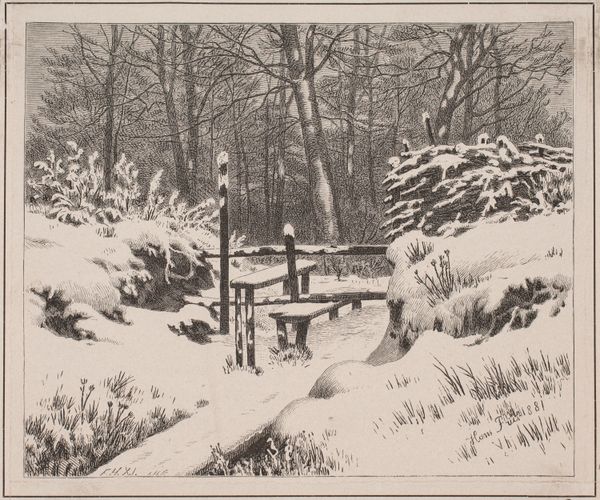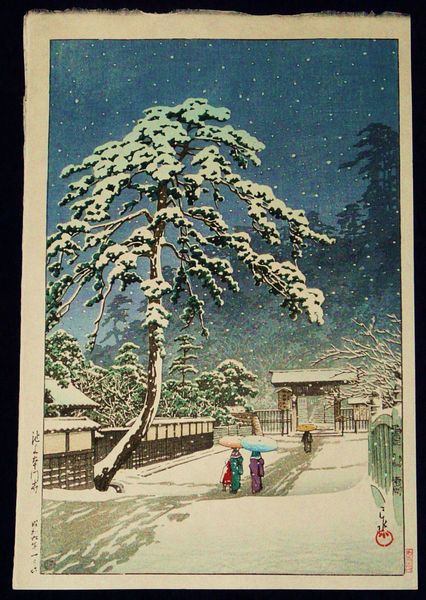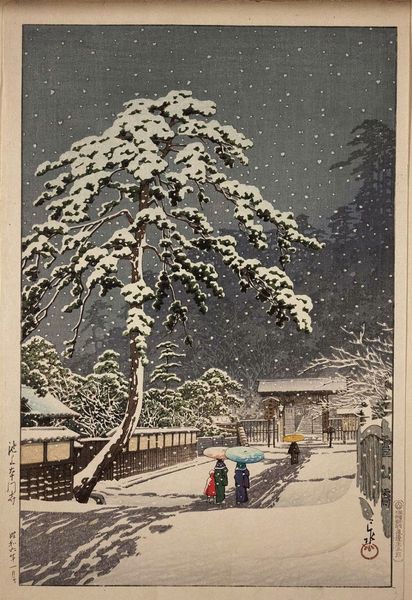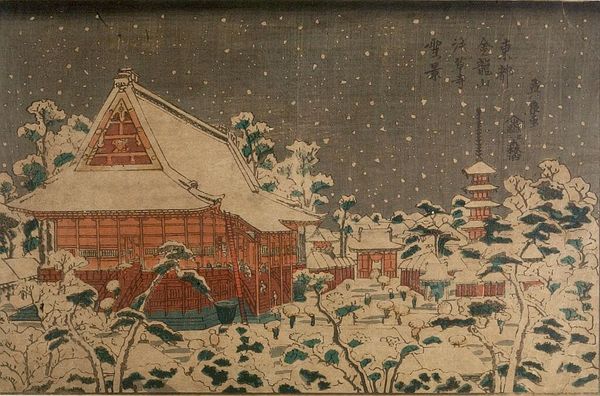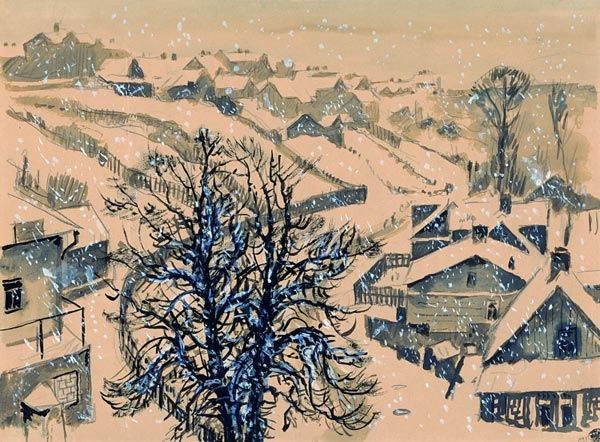
Copyright: Public domain Japan
Curator: What a wonderfully serene image! I find it immediately calming. The dominant blue of the water against the snowy landscape creates such a striking contrast. Editor: That's "Snowy Inokashira, Benten" by Hasui Kawase, made in 1929. The watercolor medium brings a gentleness to the impressionistic Ukiyo-e style, depicting the Benten Shrine at Inokashira Park blanketed in snow. It would be interesting to know more about his method and supplies, if they affected the tone... Curator: It does feel so peaceful, despite being situated during a heavy snowfall. It makes one wonder, what function did these prints have at the time of their manufacture and circulation? Editor: Ukiyo-e prints had transitioned from depicting actors and courtesans to landscapes by this point. The market for images of famous sites shifted as urban life and consumer culture took hold, bolstered by innovations in printing technologies, and were actively circulated through emerging media outlets. Curator: Thinking of the socio-economic context, the materiality of it is crucial here. The print process itself democratized image production, while labor in making these was a complex arrangement between artists, printers and publishers, with each print an artifact of intense craft. Editor: Right, they provided relatively affordable snapshots of places most people couldn't readily access, creating a sense of connection to broader Japanese society, even the imperial court. This helped form an important visual identity for a quickly modernizing country. Curator: It’s impressive how the woodblock printing process manages to create such soft gradients of colour to portray what looks like snow gently settling. It's about more than documentation, though, wouldn't you agree? Editor: Absolutely. Hasui’s skill creates an incredibly evocative scene, not just a record, of a location at a certain time. Consider how the image plays with perception—the dark water reflecting the temple provides both contrast and duplication within the overall composition. That play with the known enhances its resonance beyond simply informing the masses. Curator: Yes, precisely. Examining its process and distribution is key to understanding it’s value as a visual artifact. Editor: Ultimately, by understanding both its creation and distribution, we recognize its historical and ongoing power as a means for cultural production. Thank you for that perspective! Curator: My pleasure, this look at "Snowy Inokashira, Benten," has offered fresh avenues for exploration for myself, too.
Comments
No comments
Be the first to comment and join the conversation on the ultimate creative platform.
